Introduction
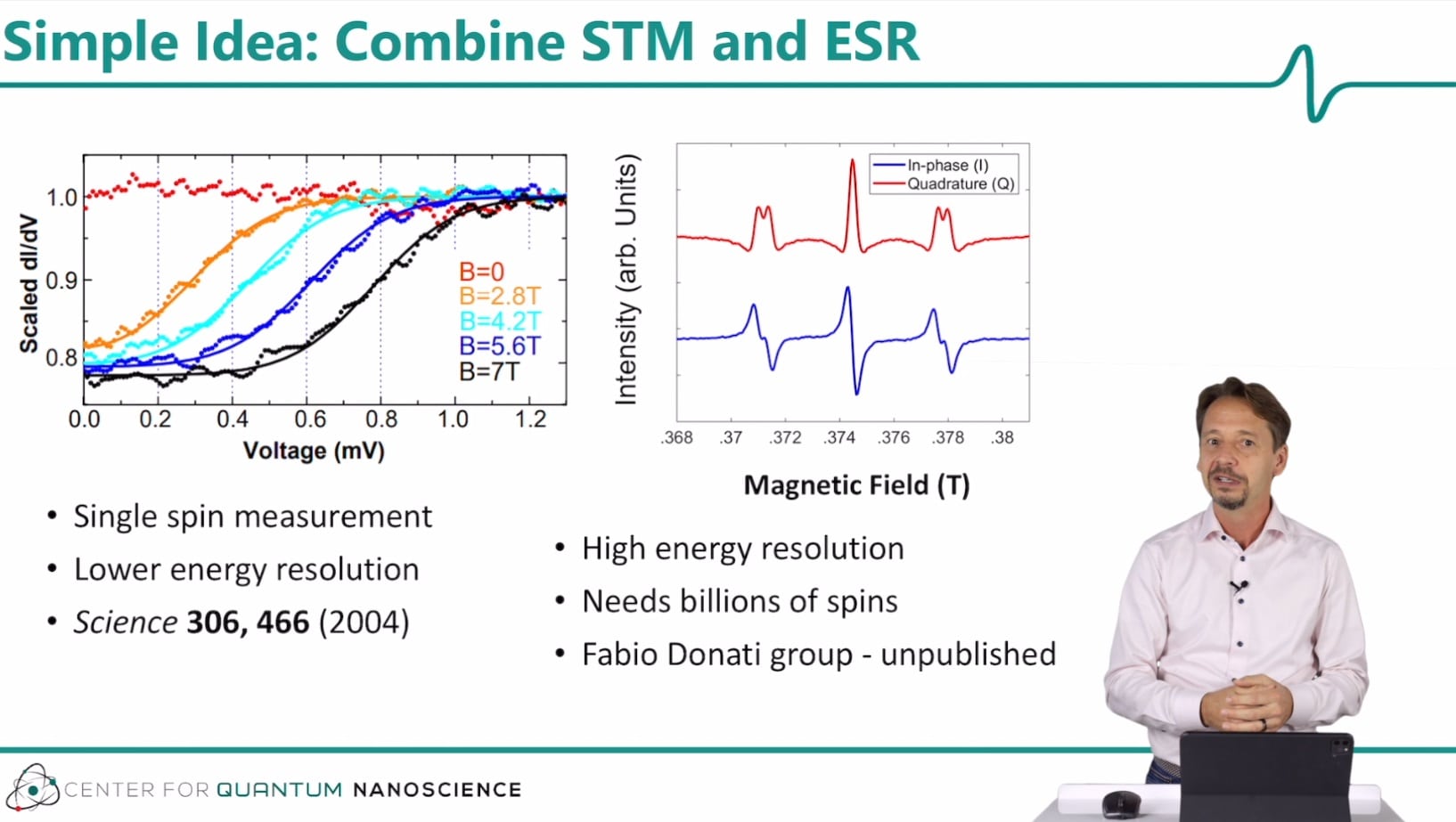
This introduction gives an overview of the ideas and concepts of combining ESR and STM. It focuses on a high-level description that avoids any complications. The basic ideas are rather simple and it is important to understand them before delving into the technical aspects discussed in the following tutorials.
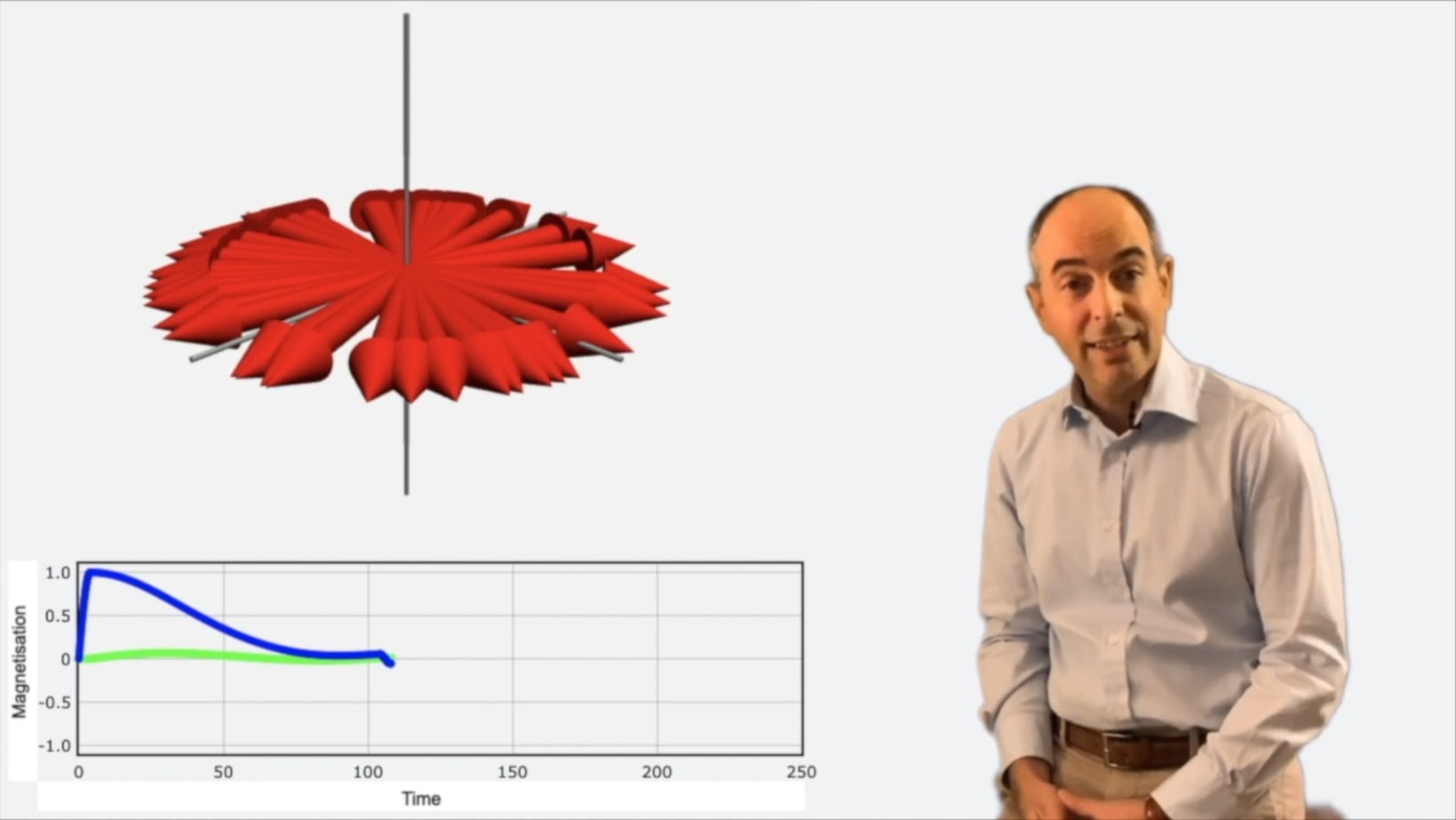
Principles of Traditional Magnetic Resonance Experiments
Arzhang Ardavan
In this module, we explain how quantum spins interact with applied magnetic fields. We demonstrate the fundamental principles of magnetic resonance, and how it can be used to manipulate spins and probe their properties in experiments.
Section 1. Prerequisites (5 modules)
We begin our tutorial with the basics. Of course, a general introduction to ESR would be its own tutorial but nevertheless, we have tried to give you enough information for a successful start. We then move on to the idea of describing the low-energy states of a spin through the language of the Spin Hamiltonian. We incorporate some of the required quantum coherence in this introduction to the theory as well.
On the practical side, we have to talk about the most challenging section: how to you get GHz frequency signals into an STM that is operating at low temperature and in a low-vibration environment. We will also cover the important topic of the transfer function: in ESR-STM we often want to apply a high-frequency voltage between tip and sample and we want to keep its amplitude constant when we change its frequency. This either requires perfect cables or a method to calibrate the frequency dependence and then compensate for it. Finally, we will show you how to make MgO thin films on Ag(100). For some strange reason, this is still the only substrate where ESR-STM has been demonstrated and therefore it is obviously something we highly recommend to start with.
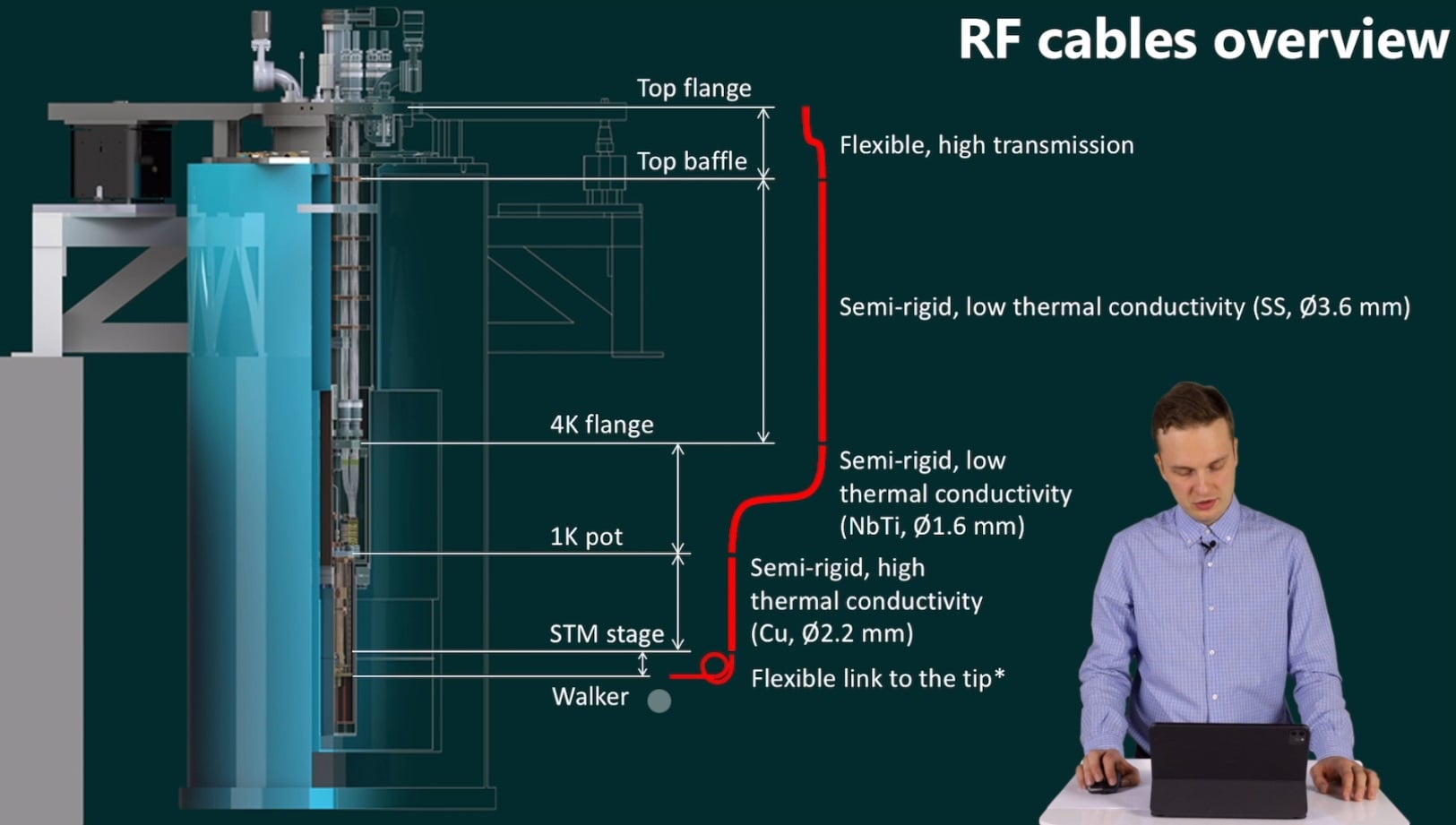
A. Internal UHV Upgrades
Denis Krylov
This module covers the necessary internal upgrades of the STM setup which are required for Electron Spin Resonance (ESR) measurements. Radio frequency (RF) signals are delivered through dedicated lines which we will discuss.
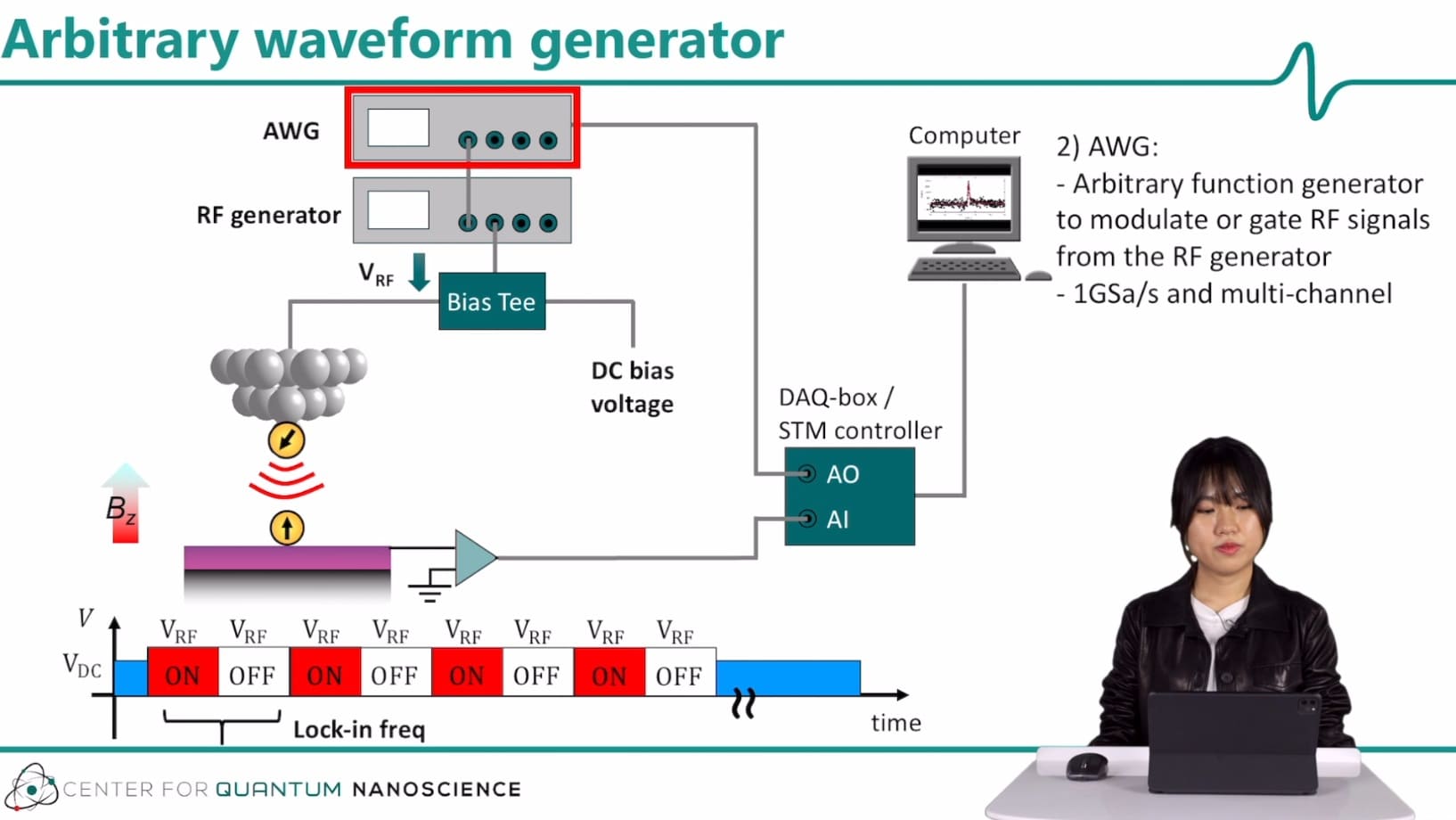
B. External Electronic Equipment
Jinkyung Kim, Yu Wang, Taeyoung Choi
The module introduces basic electronic components, their roles, and their connections which are necessary to perform ESR-STM experiments. The following are explained in detail: data-acquisition toolbox, a radio frequency generator, bias-tee, RF cabling, and arbitrary waveform generator.
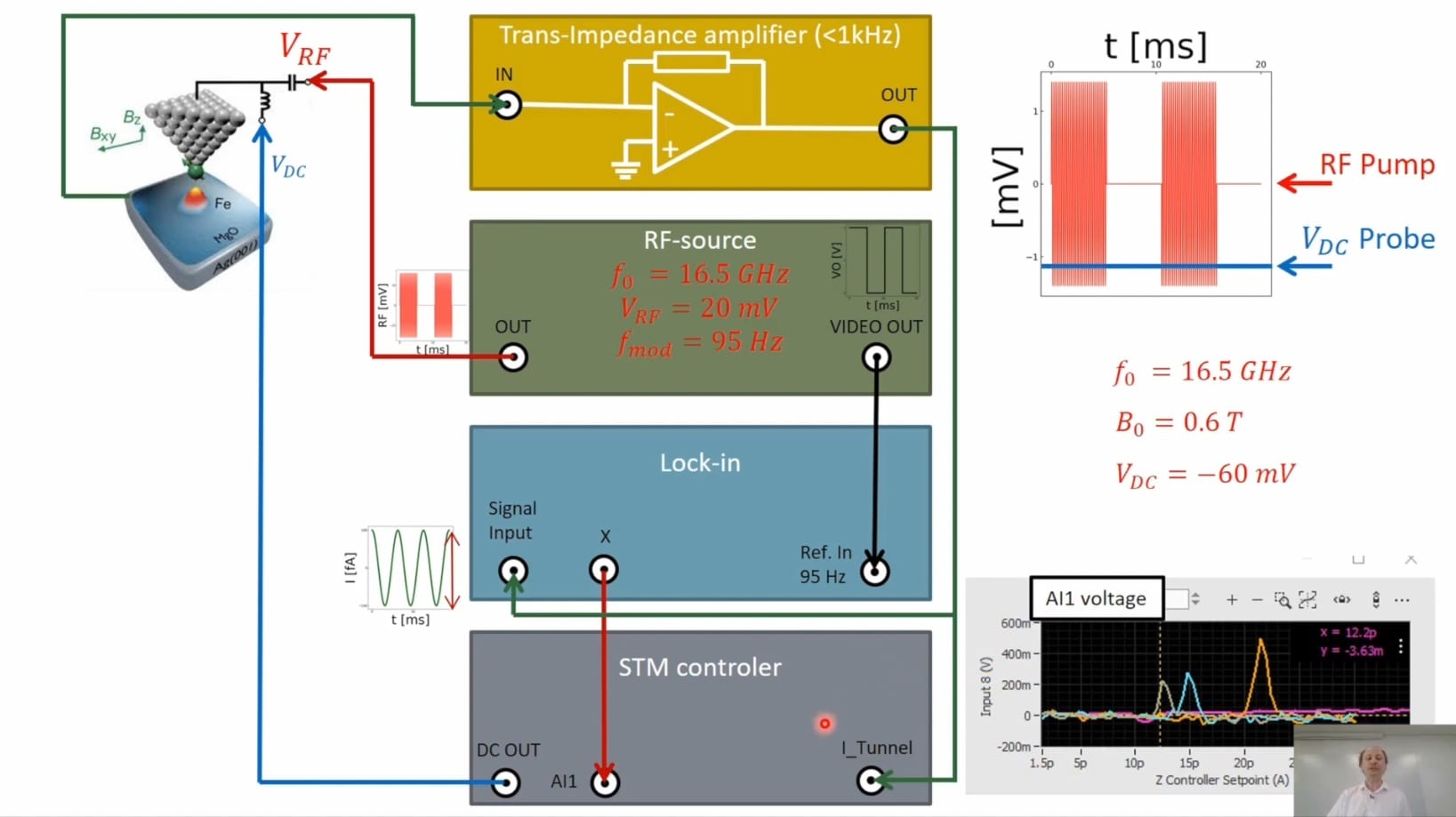
C. Set up of the Instruments and the Programming Interface for ESR-STM Experiments
Hervé Aubin
This module shows how to set up the instruments and programming interface for the ESR-STM Data Acquisition Toolbox (DAQ), which is controlled by a Matlab program, to modulate the microwave signal from RF generator and triggers Lock-in. We describe the detailed connection between DAQ box, Lock-in, and RF source which is necessary to perform ESR-STM experiments.
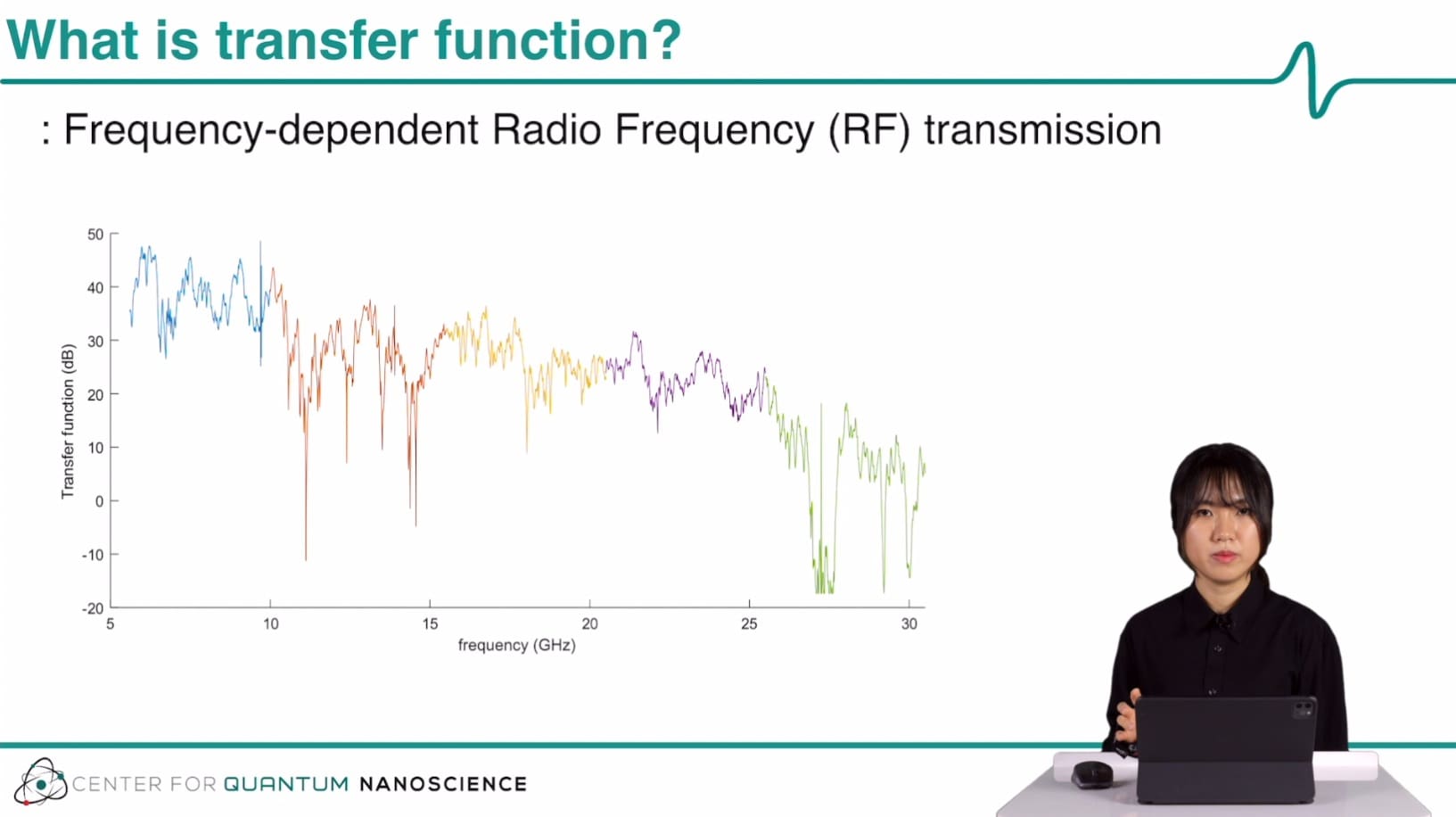
D. Measuring the RF Transfer Function from the Source to the Tunnel Junction
Jinkyung Kim, Hong Bui
Since ESR measurement on ESR-STM is measured by the change of the tunneling current, flattening the background of tunneling signal is needed. Here, we explain the transfer function that compensates different radio frequency (RF) power generated by RF source along the frequency sweep. This helps us to flatten the background current so as to easily distinguish real ESR signal.
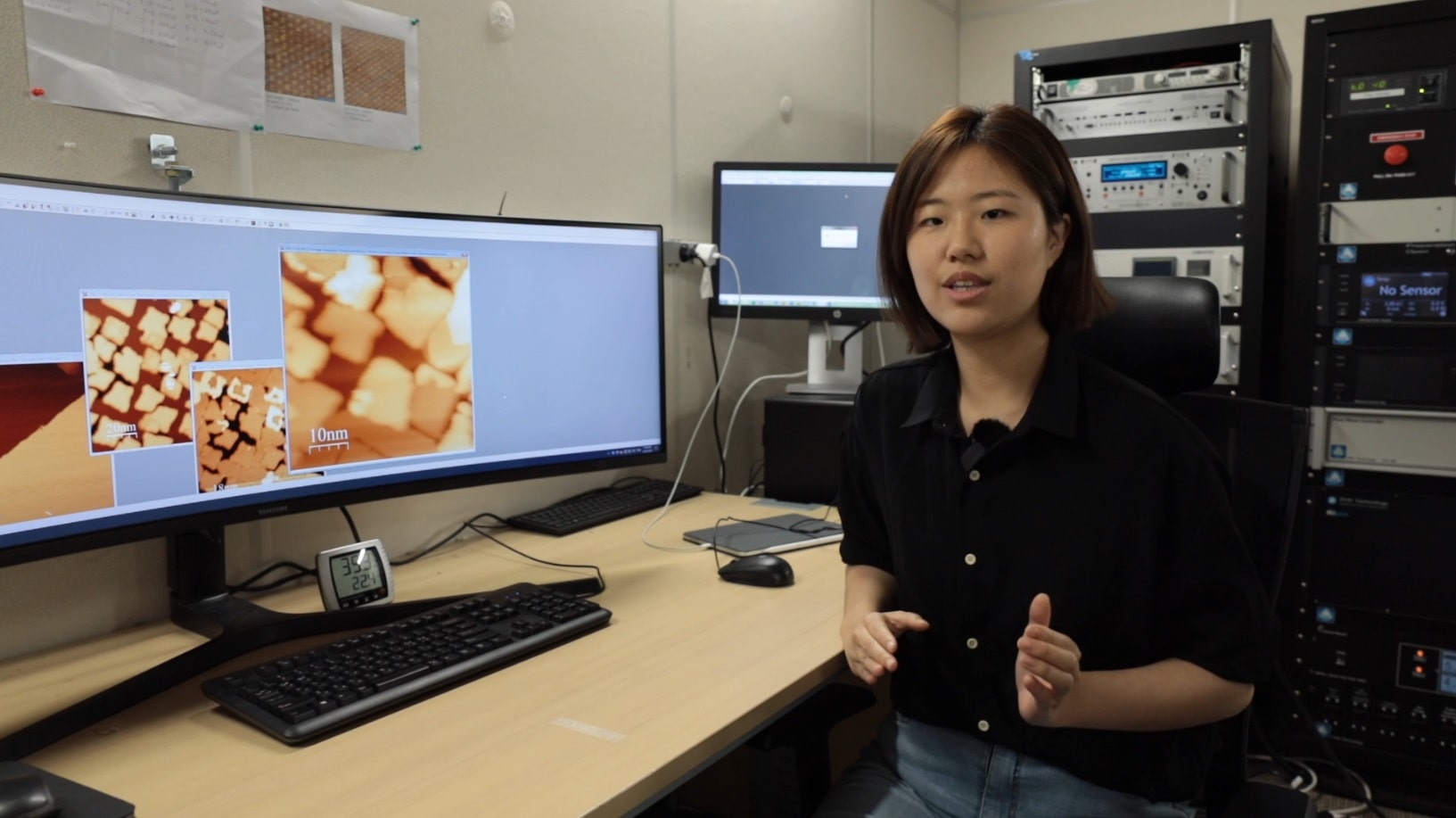
E. Growing MgO Insulating Films for ESR-STM Measurement
Hong Bui, Kyungju Noh
An insulating layer on a metal surface is used to decouple the spin of a magnetic atom from the substrate. Here we show the process of growing MgO films on Ag(100) sample and explain how to check the thickness of different MgO insulating layers.
Section 2. Conducting Measurements (5 modules)
This section aims at helping you to have a visualized sense of how to perform an actual ESR measurement in STM. To make ESR spectroscopy easily understood, we start from a brief introduction of ESR detection mechanism, including tunneling magnetoresistance (TMR) effect, Larmor precession, heterodyne and homodyne detection, etc. Understanding the detection mechanism will help to extract useful information from the line shape of ESR spectra.
In order to perform a high-quality ESR measurement, a STM tip having good performance in spin polarization (sp) is of vital importance. In the corresponding modules, we focus on the tip influence on ESR measurements. We show a benchmarking recipe to prepare a sp-tip by transferring magnetic metal atoms from surface to tip apex and evaluate tip’s spin polarization by performing differential conductance (dI/dV) measurement. You can find several representative dI/dV spectra measured with our good sp-tips for reference. We also illustrate a ubiquitous physical model of the tip field which can be utilized as a controllable local magnetic field to address single spins. Based on this, a new ESR scheme – tip field-sweep has been developed and shows great potential compared to conventional frequency-sweep ESR measurements.
Additionally, we talk about the magnetic spin-spin interactions of metal atoms on the surface and demonstrate how to study these interactions via precise ESR measurements. Finally, we access pulsed ESR field which is considered as one step ahead of normal continuous-wave ESR studies, from which coherent quantum control on single atom spins can be realized.
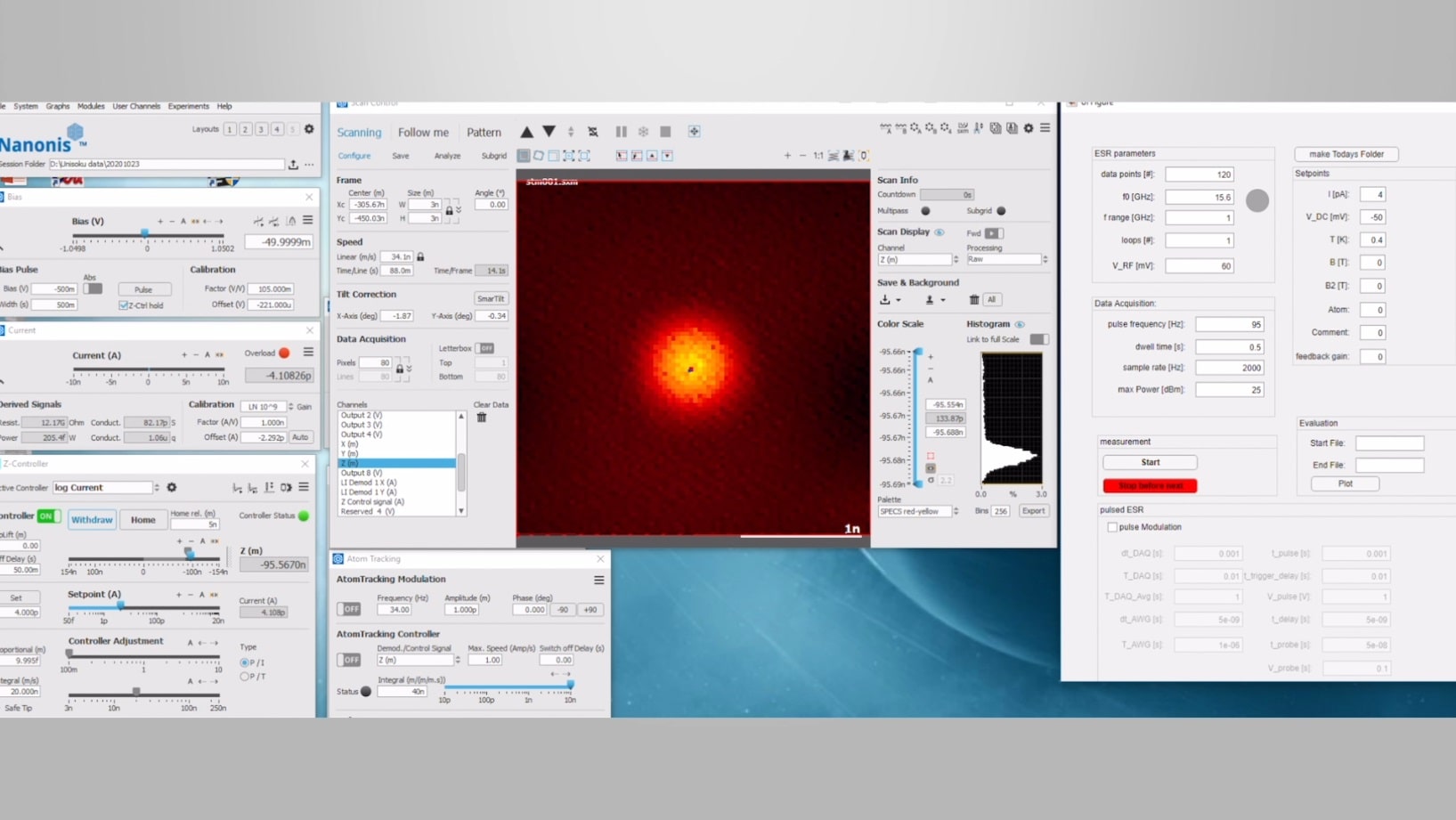
A. Measuring ESR using the Frequency Sweep Method
Hong Bui
There are two methods to measure electron spin resonance in STM using sweeping magnetic field or frequency. Here, we want to show you how to get an ESR peak by sweeping a range of frequencies under the constant external magnetic field. We obtain the change of tunneling current at the junction depending on frequency given by RF generator.
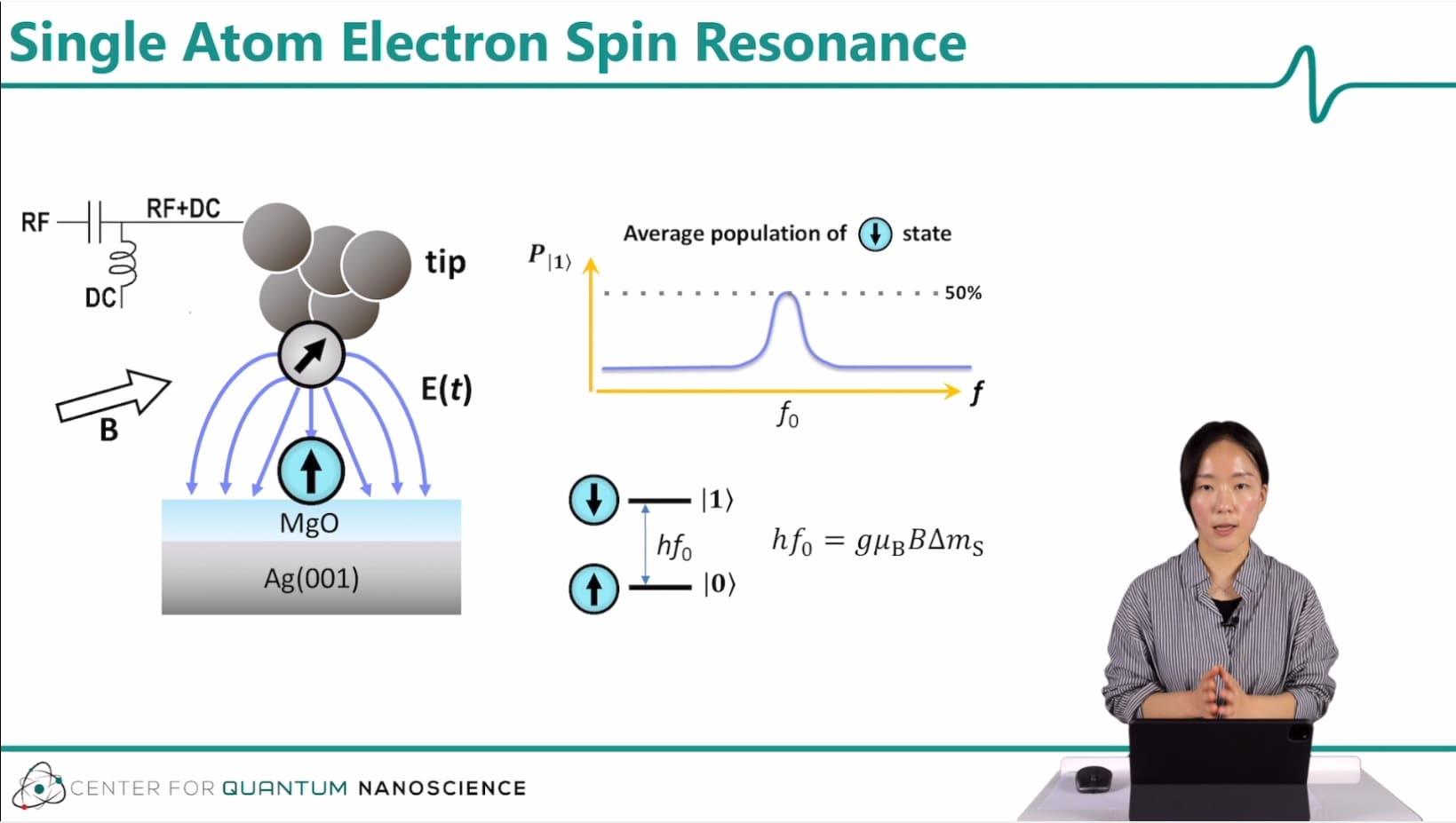
B. ESR Detection in STM
Yujeong Bae
This module explains how we detect electron spin resonance signals in the scanning tunneling microscope. Mostly we discuss the continuous wave ESR experiment and the time-averaged signals detected by the DC and AC bias voltages. We describe the asymmetric ESR signals based on the DC and homodyne detections.
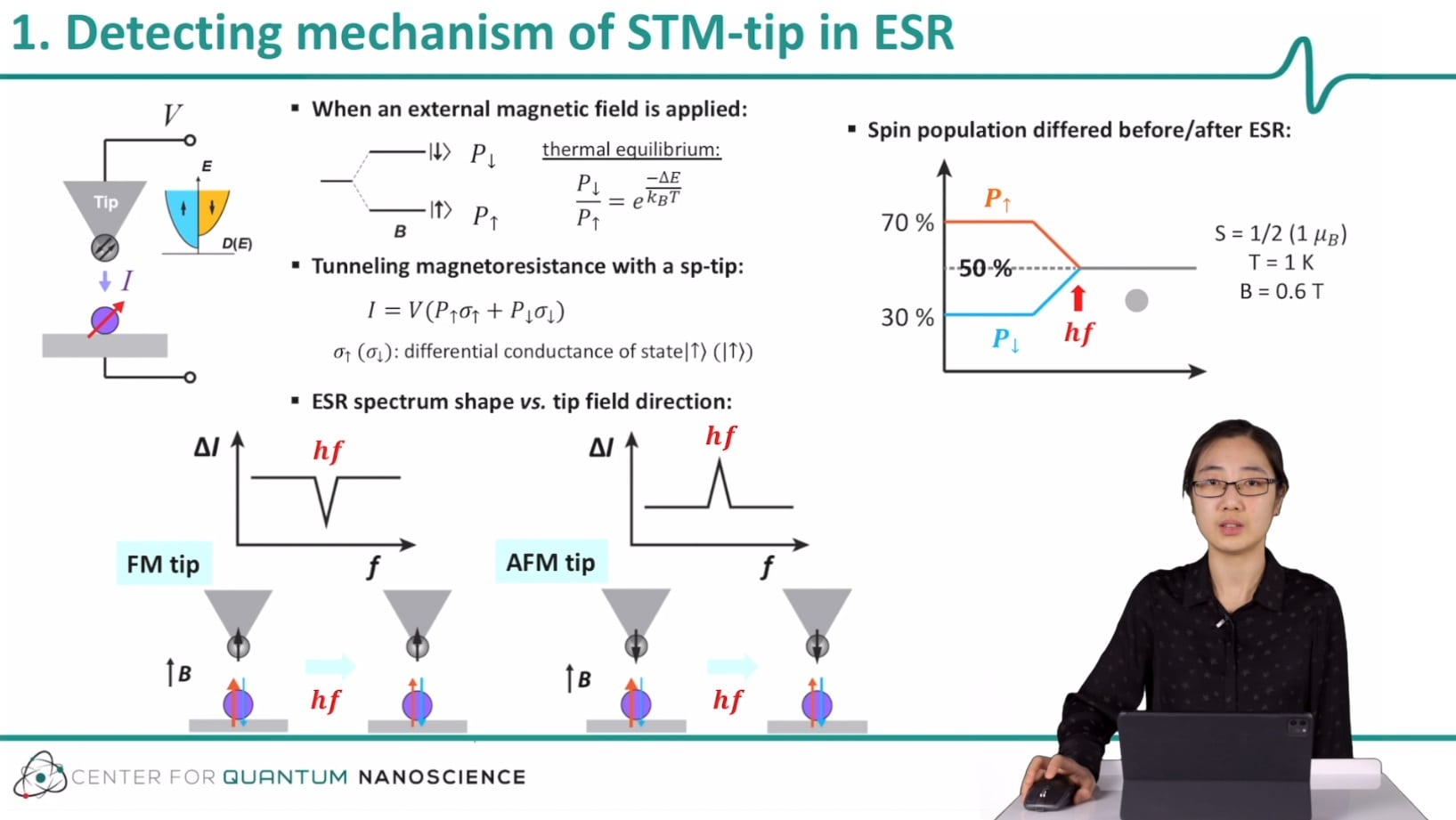
C. Tip Influence on ESR & Making ESR Tips
Xue Zhang
This module focuses on the important role of a STM tip in actual ESR measurements. We introduce the detecting mechanism of a spin-polarized tip in ESR measurements; the common procedures to prepare an ESR tip in an STM system; and how to estimate the spin-polarization of the tip from differential conductance spectra. We also talk about the physical model of tip magnetic field in a STM junction and highlight the newly developed tip-field sweep ESR measurements by comparing with the conventional frequency sweep ESR measurements. Please note that the voltages in this tutorial are referenced to tip bias.
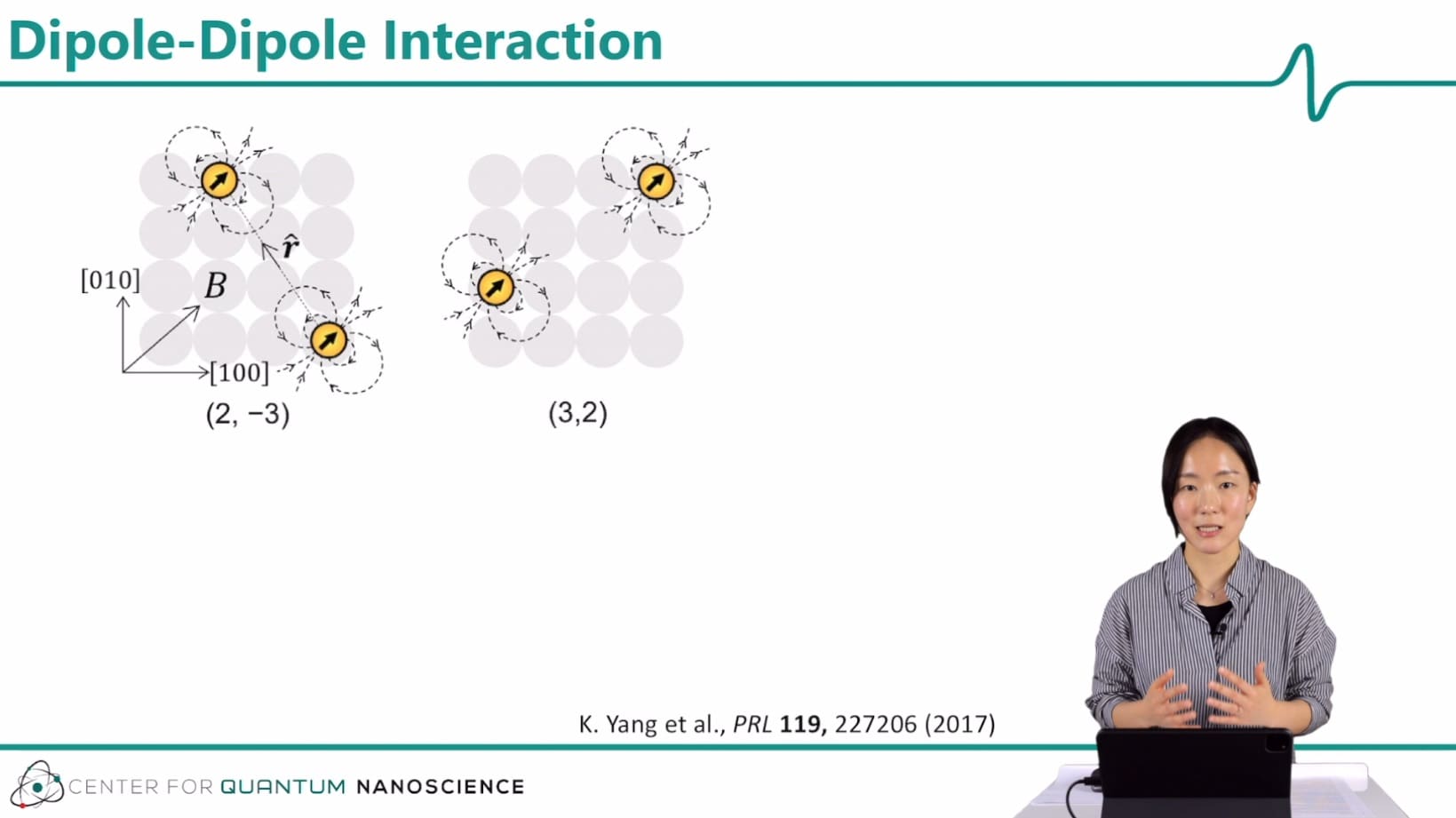
D. Magnetic Interactions
Yujeong Bae
Here, we describe the magnetic interactions between atoms on a surface and how we characterize the magnetic interactions using electron spin resonance combined with atom manipulation using scanning tunneling microscopy. Based on experimental results, we show how we distinguish exchange interaction and dipolar coupling.
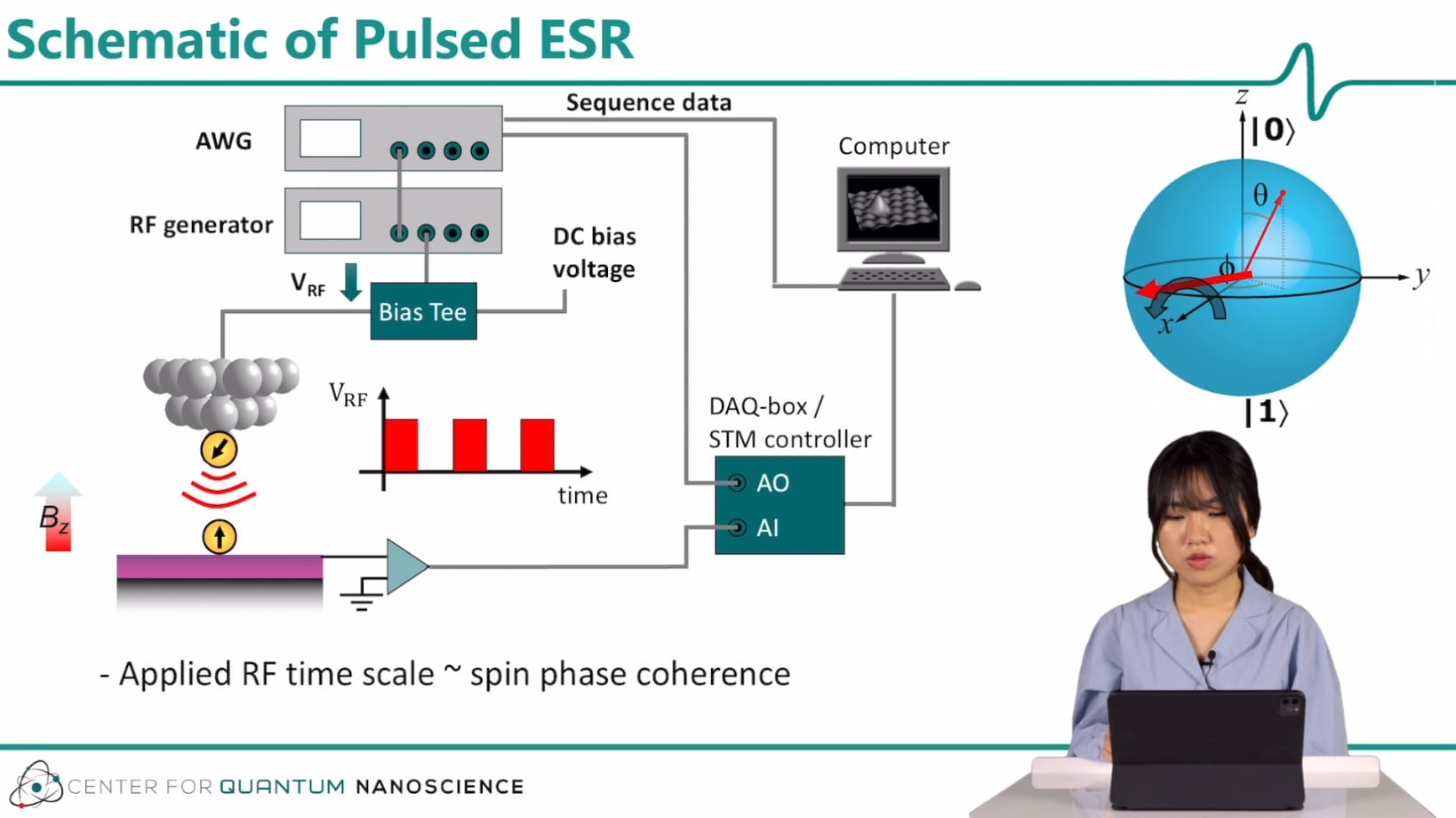
E. Pulsed ESR
Jinkyung Kim, Yu Wang, Taeyoung Choi
Here, we describe the magnetic interactions between atoms on a surface and how we characterize the magnetic interactions using electron spin resonance combined with atom manipulation using scanning tunneling microscopy. Based on experimental results, we show how we distinguish exchange interaction and dipolar coupling.
Section 3. Theory of ESR-STM (3 modules)
In section 3 of our ESR-STM tutorial you can find details about the theoretical models that are used to describe the physics underlying the phenomena studied in scanning tunneling spectroscopy (STS) and STM ESR measurements as well as a hands-on demonstration on how to perform magnetic multiplet calculations.
We will first introduce the concept of multiplet calculations, based on an effective Hamiltonian of the system, that includes: the contributions from electron-electron interaction; the crystal field; spin-orbit coupling; and external magnetic fields. As a result, you will be able to understand how conventional spin-excitations differ from the observed ESR transitions, not only in their observed energy range but also through their spin and orbital structure.
In the second module, we will explain how we can understand the mechanism that drives ESR transition in an STM ESR setup. After briefly touching on the basics of a driven two-state quantum system, we will elaborate on the effect of barrier modulation by an oscillating external electric field, which is an effective driving mechanism for ESR-STM.
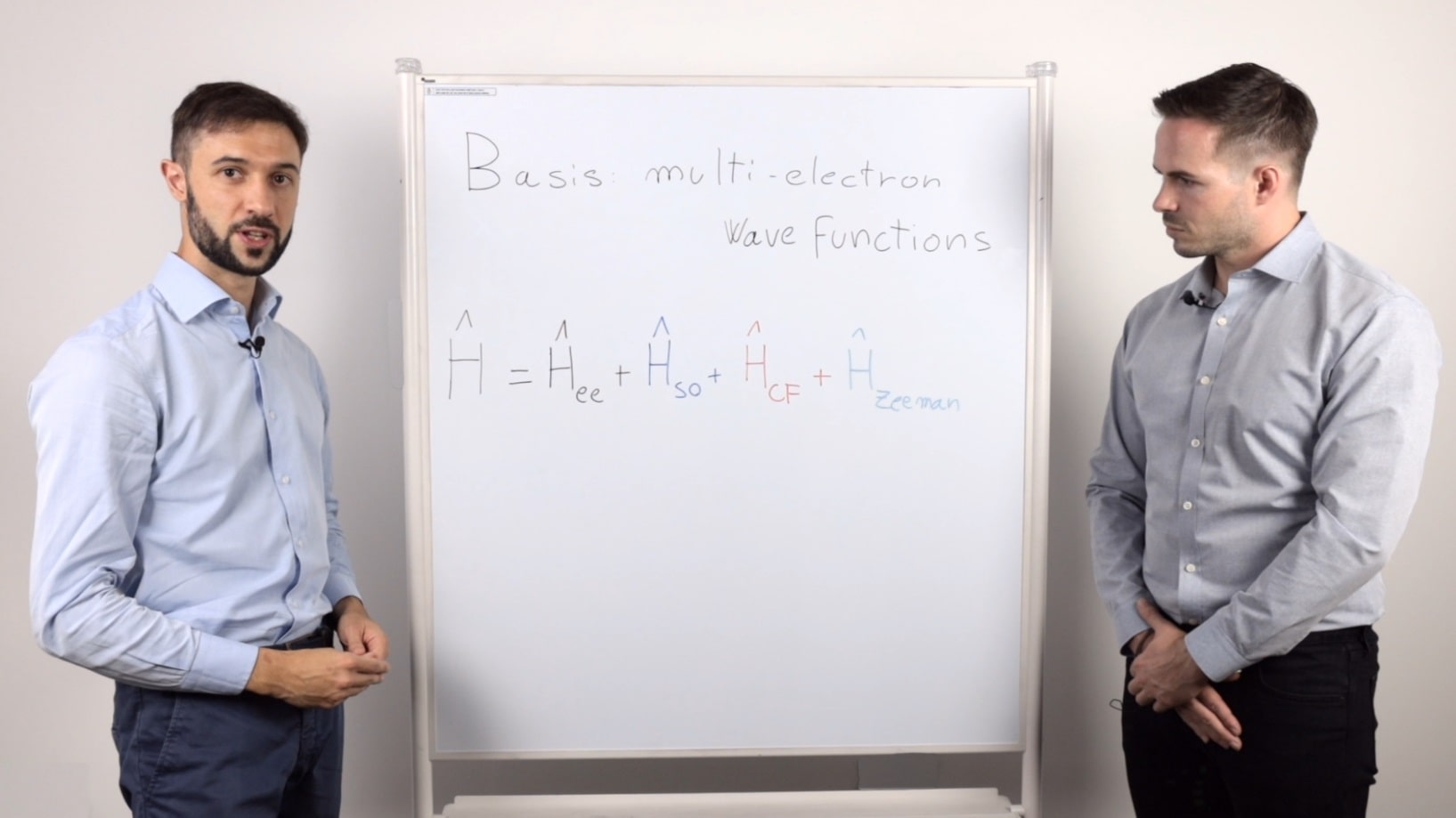
A. Multiplet Calculations
Fabio Donati, Christoph Wolf
In this module, we introduce the concept of effective spin Hamiltonians and magnetic multiplet calculations. We show how to use these in order to accurately predict the energy levels of an iron ad-atom on a magnesium-oxide surface by using density functional theory (DFT) and a multi-orbital Hubbard solver.
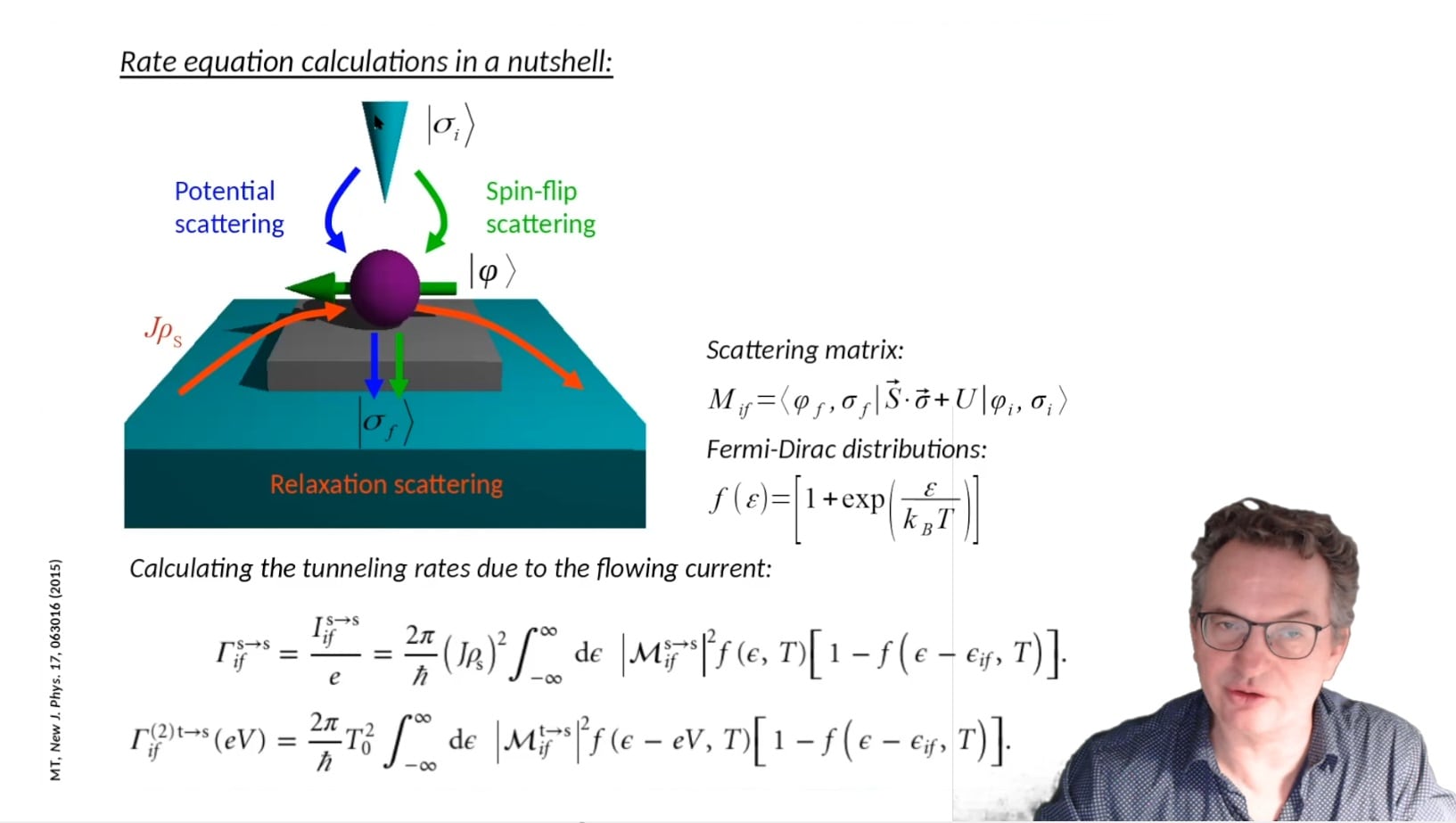
B. Describing the Spectroscopic Features of Spins on Surfaces Probed with STM
Markus Ternes
In this module, we will discuss how quantum spins and their interactions with the tunneling current systems can be described with model Hamiltonians. We will cover elastic and inelastic scatting processes which lead to magneto-resistive elastic tunneling. Furthermore, we will examine higher order effects and time-dependent effects using a rate equation and Bloch-Redfield model.
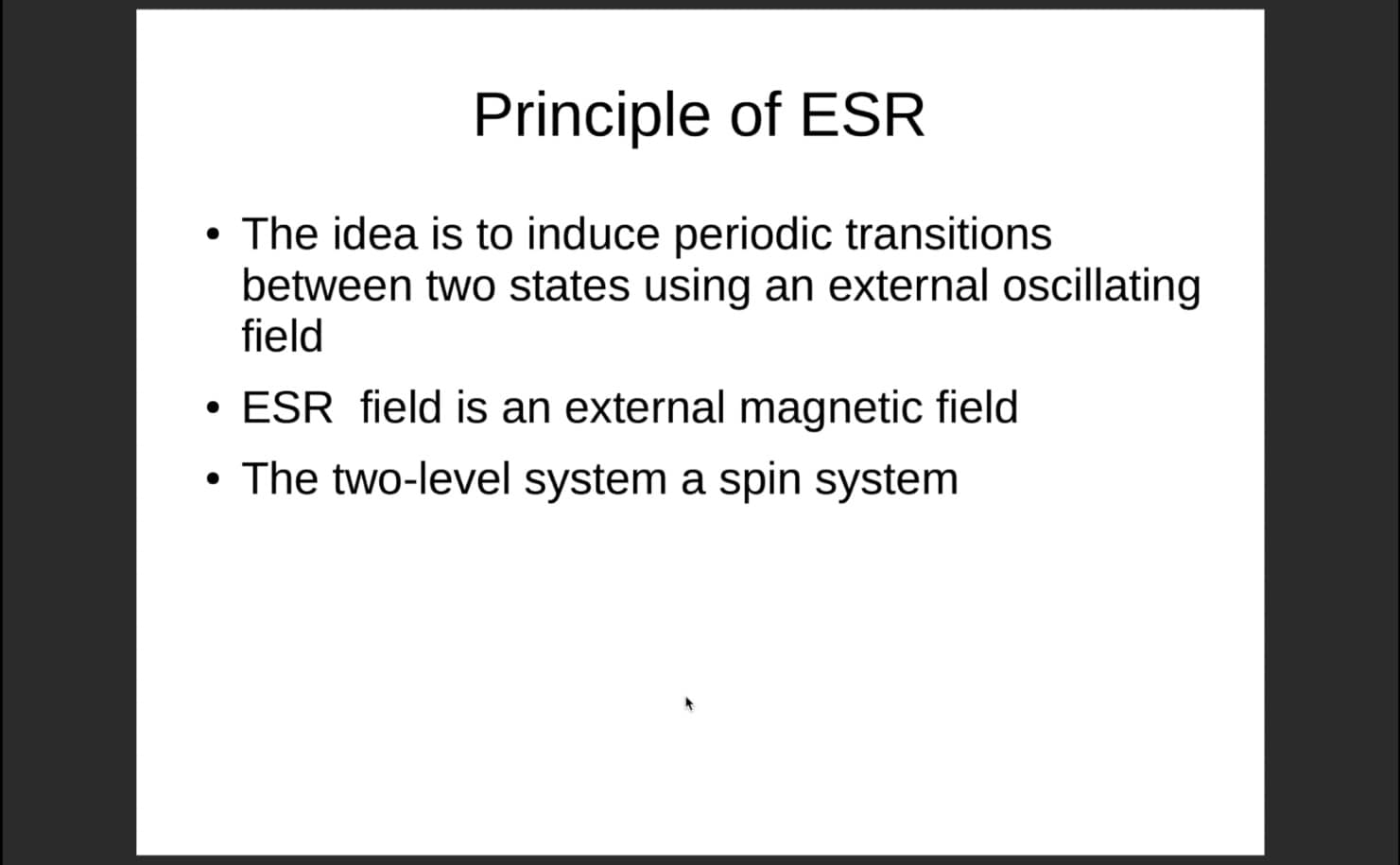
C. The Principle of ESR-STM
Nicolas Lorente
This module explains how we detect electron spin resonance signals in the scanning tunneling microscope. Mostly we discuss the continuous wave ESR experiment and the time-averaged signals detected by the DC and AC bias voltages. We describe the asymmetric ESR signals based on the DC and homodyne detections.
Certification
Now that you have completed the ESR-STM tutorial, take our quiz and get certified with an official certification and badge for your CV and LinkedIn profile! Take quiz now
Share
You are invited to share this tutorial with your students, postdocs, and colleagues.
Thanks for spreading the word about this tutorial!